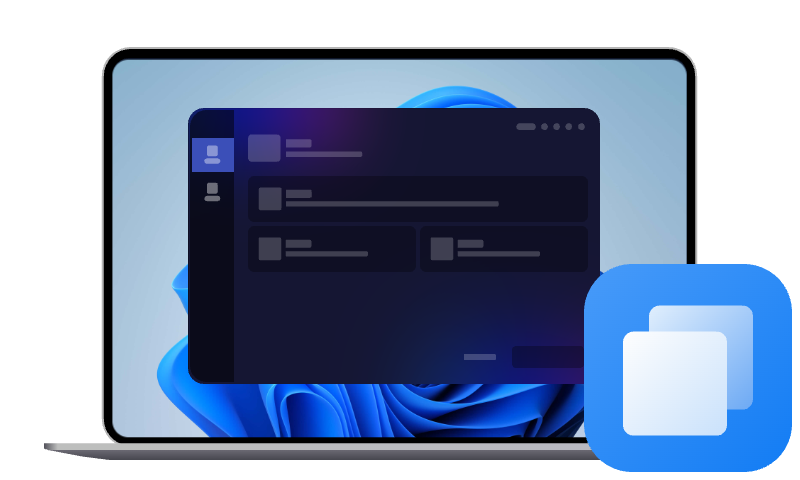Macrium Reflect Clone Failed? How to Fix Error 9, 8, 0, and More
If you’ve faced a "Macrium Reflect clone failed" error, don’t worry! This article will explain the possible causes and provide step-by-step solutions to resolve cloning failures effectively.
Macrium Reflect is a popular disk cloning and imaging tool used for system backups and disk migration. However, many users encounter errors when attempting to clone a disk, such as:
- Macrium Reflect clone failed error 9 - Usually caused by bad sectors on the source or target disk.
- Macrium Reflect clone failed error 8 - Occurs when there is insufficient space on the target disk.
- Macrium Reflect clone failed error 0 - Often related to partition table mismatches (MBR vs. GPT).
If you're facing these errors, don't worry - this article will help you understand the causes and provide step-by-step solutions to successfully clone your disk and it offers an error-free Macrium Reflect alternative for quick and secure disk clone.
Why Macrium Reflect Clone Failed?
Macrium Reflect cloning errors can be triggered by several factors, including:
- Bad Sectors on the Disk – If either the source or target disk has corrupted sectors, Macrium Reflect may fail to read or write data.
- MBR/GPT Compatibility Issues – If the source disk is MBR (Master Boot Record) and the target disk is GPT (GUID Partition Table) (or vice versa), cloning may fail.
- Insufficient Space on Target Disk – If the target disk is smaller than the source disk, Macrium Reflect might not be able to clone it, even if the used space is less than the available space.
- Existing Partitions on Target Disk – If the target disk has existing partitions, the cloning process may fail due to partition structure conflicts.
- Secure Boot and Fast Startup Enabled – Some modern systems have security features that prevent disk cloning software from making changes.
- Software Conflicts – Running other disk management or backup software alongside Macrium Reflect can cause interference.
Best Macrium Reflect Alternative for Error-Free Disk Cloning
Macrium Reflect is a reliable tool for disk cloning and imaging, but it can be complex for beginners and prone to compatibility issues. If you frequently encounter Macrium Reflect clone failed errors, consider using an alternative like AOMEI Cloner, which offers:

- More cloning options - Offers System Clone, Disk Clone, and Partition Clone.
- Better compatibility - Supports both MBR and GPT disks without manual conversion.
- User-friendly interface - Easier to navigate compared to Macrium Reflect.
- Wide Compatibility - Support various disk brands (Samsung, Intel, WD, etc.), disk types (HDD, SDD, SSHD, etc.), disk interfaces (SATA, NVMe, etc.).
How to Clone a Disk using AOMEI Cloner
Follow these steps to successfully clone your disk with AOMEI Cloner:
Step 1: Click the button and download the full-featured cloning software.
Step 2: Click Clone on the left panel and choose Disk Clone to copy the entire disk, including the OS and all partitions.
Step 3: Select the disk you want to clone (e.g., your old HDD), and click Next.
Step 4: Choose the destination disk (e.g., your new SSD). If your target disk is smaller than the source disk, you can edit the partition to copy only the used space.
Step 5: Click Start Clone and wait for the process to complete.
If you are cloning to an SSD, please check the SSD Alignment option to boost the performance of the target SSD. The Sector By Sector Clone aims to copy every sector of the source drive, so it requires the destination drive to be equal to or larger than the source disk; if you do not check this option, it will run in Intelligent Clone to copy only the used space, which allows to migrate to a smaller drive. Once the cloning process is done, replace your old disk with the new one and boot your system.
How to Fix Macrium Reflect Clone Failed Error
If Macrium Reflect fails to clone a disk or Macrium Reflect clone failed to boot, you need to apply the appropriate solution based on the specific error code. Below, we will explain common Macrium Reflect clone failure errors and provide effective fixes.
Fix 1: Check and Repair Bad Sectors (Fixes Error 9, 8 – Disk Read/Write Issues)
If you encounter “Macrium Reflect clone failed error 9” or “error 8”, this typically indicates that the source or target disk has bad sectors, preventing the software from properly reading or writing data. Repairing bad sectors can improve disk readability and prevent interruptions during cloning.
How to Repair Bad Sectors
1.Open Command Prompt (CMD): Press Win + R, type cmd, and press Ctrl + Shift + Enter to run as an administrator.
2. Run the disk check command (replace X with your drive letter):
- chkdsk X: /f /r /x
3. If prompted to restart the system, type Y and press Enter to confirm.
4. Wait for the scan to complete, then retry the cloning process.
If the disk has too many bad sectors, consider backing up your data and replacing the disk to avoid further issues.
Fix 2: Convert the Target Disk to MBR or GPT (Fixes Error 0 – Partition Table Mismatch)
When to use this fix: If your source disk and target disk have different partition table formats (e.g., MBR to GPT or vice versa), Macrium Reflect may fail with “Macrium Reflect clone failed error 0”. The solution is to ensure both disks use the same partition table format.
How to Convert MBR/GPT Format
1. Open Disk Management: Press Win + R, type diskmgmt.msc, and press Enter.
2. Find the target disk, right-click on each partition, and select “Delete Volume” (back up your data first).
3. Right-click on the disk area (not partitions) and select “Convert to MBR Disk” or “Convert to GPT Disk”.
4. Retry the cloning process with Macrium Reflect.
Fix 3: Shrink Source Partition Size (Fixes Error 8 - Not Enough Space on Target Disk)
If your target disk is smaller than the source disk, Macrium Reflect may fail to clone, or the Macrium Reflect dismount failed may occur, even if the used space is within the target disk’s capacity. Shrinking the source partition can resolve this issue.
How to Shrink the Source Partition
1. Open Disk Management: Press Win + R, type diskmgmt.msc, and press Enter.
2. Right-click on the main partition of the source disk and select “Shrink Volume”.
3. Adjust the partition size to ensure it fits within the target disk’s capacity.
4. Retry the cloning process.
If Macrium Reflect still fails, consider using AOMEI Cloner, which supports Intelligent Clone (cloning only used space) to avoid space mismatches.
Fix 4: Delete and Recreate Partitions on the Target Disk
If your target disk already contains partitions, Macrium Reflect may not be able to overwrite them properly, leading to the Macrium Reflect clone failed unable to match partition problem. Deleting all existing partitions can help resolve this issue.
How to Delete Partitions on the Target Disk
1. Open Disk Management (Win + R → diskmgmt.msc → Enter).
2. Find the target disk, right-click on each partition, and select “Delete Volume”.
3. After deleting all partitions, retry the cloning process, and Macrium Reflect should create new partitions automatically.
Fix 5: Disable Secure Boot and Fast Startup
Secure Boot and Fast Startup may prevent disk cloning tools from modifying the system partition, causing the cloning process to fail. Disabling these features can increase the cloning success rate. Here is how to disable secure boot and fast startup to resolve Macrium Reflect clone failed disk not found and other errors:
1. Enter BIOS Settings: Restart your computer and press F2, F12, DEL, or ESC (depending on your motherboard) to access BIOS.
2. Locate the Secure Boot option and set it to Disabled.
3. Disable Fast Startup:
- Open Control Panel → Power Options.
- Click “Choose what the power buttons do” and select “Change settings that are currently unavailable”.
- Uncheck “Turn on fast startup (recommended)” and save changes.
4. Restart your PC and try cloning again.
Conclusion
Macrium Reflect clone failures (error 9, 8, 0) are often caused by bad sectors, partition format mismatches, insufficient space on the target disk, or pre-existing partitions. Depending on the specific error, the solutions include repairing bad sectors, converting disk formats, shrinking source partitions, deleting existing partitions, or disabling Secure Boot.
If Macrium Reflect continues to fail, consider using AOMEI Cloner, which offers better compatibility, an intuitive interface, and Smart Cloning features for seamless disk migration.
FAQs About Macrium Reflect Clone Failed Error
1. What does Macrium Reflect clone failed error 9 mean?
Error 9 indicates that the disk has bad sectors or read/write issues, preventing successful cloning. Running chkdsk can help repair bad sectors.
2. How do I fix Macrium Reflect clone failed error 8?
Error 8 means there is not enough space on the target disk. You can try shrinking the source partition or using AOMEI Cloner’s to clone only used space.
3. How do I fix Macrium Reflect clone failed error 0?
Error 0 is typically caused by an MBR and GPT partition mismatch. Converting the target disk to match the source disk’s format can resolve the issue.

